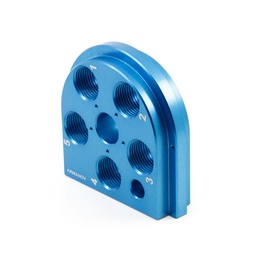Since I'm running a XL750 and a CP2000 (which is just a lobotomized 1100, that doesn't have priming/powder),
both with Autodrives, I figured I'd pipe in with my comments.
With charge weights being so critical for precision rifle ammo, I'd be very leery of loading ammo on a progressive press. And if I did, it would only be on a machine with an Autodrive.
The reason being, the Autodrive is what gives extreme consistency when sizing, priming and indexing of the press. WIth a manually run machine, a person's arm gets tired, so the stroke (and dwell time in the die) will vary. And variance is what we're trying to avoid.
Were it me (and what I do) I'd just run case prep on the machine (again, preferably with an Autodrive), and then drop charges and seat bullets manually.
As to which press, I'd recommend (if you can afford it) to go with the 1100. I can tell you from experience that the 750 gets pretty crowded, pretty quick. If you ever automate it, real estate begins to get really tight as you add all the sensors and cables. The other reason I'd suggest the 1100, is that it is just a whole lot more robust/stiff. Which again means much more consistency when sizing/bumping shoulders back, as well as priming. I started with a 750. After getting the CP2K and using it, I wish I had just got an 1100. It also made me wish I had bought the 1100 when I went back to load 9mm & 223 on my 750. It doesn't seem like much, but going from 5 stations to 7 opens up a huge amount of options when it comes to processing. Nevermind being able to swage crimped primer pockets as part of the process, as well. The 1100 also comes with the case feeder, the 750 you have to buy it separately.
The 1100 is also much easier to set up with an Autodrive (you literally mount it to the Autodrive, remove the handle and bolt on a geared pulley wheel). The 750 has to have the linkage pulled apart, to support attaching the piston to the ram). And let's face it, once you have something like a Dillon or Apex, sooner or later, you're going to want to automate it. Everyone that I have spoken to, that put an Autodrive on their machines had the same reaction I did, which was..."Why in the hell didn't I do this sooner?!?!?"
All this crap is pricey, I know. But with Dillon releasing their own Autodrive (which I don't feel is on the same level as the Mk7 Autodrive), prices are going to start coming down. There's already at least one other company that is starting to build/sell autodrives as well. I believe it really is going to be the future of progressive reloading.
Anyways, not sure if that helps, or muddies the waters, but just wanted to give my thoughts.
MPMI
ETA: Perhaps
@Threadcutter308 has some thoughts to share as well...

